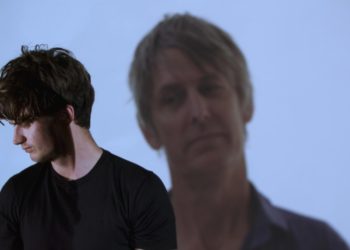It is a conclave of superlatives. More cardinals will move into the Sistine Chapel in on than for any papal election to date: 133 cardinals are expected. It will then be closed-door deliberations until they reach a majority in favor of a single choice for the new pope.
This conclave will also see more cardinals coming from different countries than ever before: 71. In the last papal election, in 2013, they came from 48 countries, and in 2005 it was 52 countries.
, who died on Easter Monday at the age of 88, had worked to make the 1.4 billion-member Catholic Church more universal and to end its focus on Europe. During that time, he broke with previous customs regarding who in the world could become a cardinal and also the character of the College of Cardinals.
“It is generally more difficult to predict the outcome of the election today, since the College of Cardinals is nationally and culturally more heterogeneous,” Augsburg church historian Jörg Ernesti told DW.
Names, bets, speculation
Speculation is rife. Even on the day of Francis’s death, many media outlets posed the question: Various names quickly made the rounds. There is betting taking place on who the next pope will be — bookmakers’ profits are rising.
French Daily “La Croix” announced on Bluesky why it was “not discussing the ‘candidates’ to succeed Pope Francis.” That includes the fact that every cardinal is eligible for the role, and that the debate about ‘favourites’ is being stoked by the “Vaticanisti” — the papal reporters. Still, the daily has presented its perspective on the most important cardinals from Asia and Africa.
Church historian Ernesti doesn’t see Francis’ appointment of 80% of the cardinals eligible to vote as a predecision — the outcome is uncertain. He says there are “too many good candidates eligible for the office.” Ernesti perceives the general mood as one which holds that “the reforms initiated by Francis must continue,” and he sees no indication of “a growing desire for a reversal.”
On a lighter note: the “Rome Duck Store,” which sells variations of the golden-yellow plastic ‘rubber ducks,’ has also had a “Pope” model for several months now. Shoppers of all faiths all buy the exact same model: a duck with a white cap, pectoral cross, and papal ring.
Many criteria for suitable cardinals
In contrast to that: how complex is the papal election, and how diverse are the candidates? Does one candidate have more experience than another in pastoral work or church management? Is he from an industrialized or a developing country? What is his theological orientation? How does talk about the church’s treatment of homosexuals? Differences can be found even among candidates of the same persuasion, for example those who are conservative, pro-Francis, or reform-oriented.
With increasing plurality among the papal electors, the pre-conclave’s significance has grown. Historian Ernesti explains that since the cardinals are no longer only based in Europe, the congregations help them acquaint themselves. The conclave itself, in contrast, is highly ritualized and “definitely not a parliamentary exchange, like in politics.”
One thing stands out: In the days immediately following Francis’s death, prominent cardinals who could shape the office made public statements. For example, Luxembourg Archbishop Jean-Claude Hollerich (66), and Philippine-born Luis Antonio Tagle (67), who holds a leading position in one of the Vatican’s agencies. However, they have since fallen silent.
A random scene in Rome this week: When an African cardinal was spotted strolling the streets near the Vatican on Friday, and asked: “Is it time for ?”, he simply raised his hand to heaven without a word.
Experienced cardinals want Francis’s course to continue
However, some the older generation of cardinals seem to be back. It is surprising to see some of them re-emerging when during the years under Pope Francis they’d appeared sidelined. According to “Crux”, an online portal, the Peruvian Opus Dei Cardinal Juan Luis Cipriani (81), whom the Doctrine Commission punished in 2019 after sexual abuse accusations, appeared in the pre-conclave meeting hall. And US Cardinal Roger Mahony (88) was also seen at the Pope’s coffin. He’d been accused of cover-ups — seemingly quelled with millions of dollars.
Meanwhile, Viennese Cardinal Christoph Schönborn (80) and German Cardinal Emeritus Walter Kasper (92), two highly respected figures in the last conclave, are expressing their views with commitment: They insist on a continuation of Francis’s course, saying it cannot be stopped. Kasper warned that this conclave will be a longer one.
What might “longer” mean? In 2013, the conclave lasted 27 hours; in 2005 it was 26 hours. The longest conclave of the 20th century took a total of five days — in 1903. Back then, there was no extensive pre-conclave. So one will have to wait and see.
“Polymarket,” an online betting site that also focuses on the conclave, has announced that most bets currently are on May 9 as the papal election date. But cardinals are likely not among the punters.
This article was originally written in German.
While you’re here: Every Tuesday, DW editors round up what is happening in German politics and society. You can sign up here for the weekly email newsletter Berlin Briefing.
The post Vatican conclave will elect successor to Pope Francis appeared first on Deutsche Welle.




